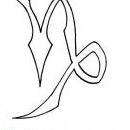-
Posts
1,682 -
Joined
-
Last visited
Everything posted by Austin1985
-

Top 10 TXHSFB Coaching Jobs
Austin1985 replied to Dirty_but_Dazzling's topic in High School Football
2 Americas situation. And no coach worth their salt would pic RVG or El Paso so the places I listed both have the talent and the facilities...... -

Top 10 TXHSFB Coaching Jobs
Austin1985 replied to Dirty_but_Dazzling's topic in High School Football
Also, Cedar Hill. That Belt Line corridor of Lancaster, Desoto, Cedar Hill, with Duncanville sitting on I-20, is the most talent laden corridor in the state. -

Top 10 TXHSFB Coaching Jobs
Austin1985 replied to Dirty_but_Dazzling's topic in High School Football
NorthShore Euless Trinity Westfiled Duncanville DeSoto Lancaster John Tyler College Station The Woodlands Arlington Martin -
True. Bottom line: the question is, how much maintinence(sp) and up keep is a district willing to pay for a football/soccer field
-

Beaumont united is open!!! / Darrell Colbert Sr. New HC
Austin1985 replied to lcm93's topic in High School Football
Back to Colbert getting the job. I see BU is having a meet a great soon. Despite the short comings of the AD, I've never seen a HC introduce himself to the community like this so perhaps Colbert is starting out on the right foot -

Beaumont united is open!!! / Darrell Colbert Sr. New HC
Austin1985 replied to lcm93's topic in High School Football
3rd...... HISD football is Lamar is the tallest midget......... Northshore to the East Katy to the West Westfield and Spring battle with The Woodlands and a couple of Klein schools.... -

Beaumont united is open!!! / Darrell Colbert Sr. New HC
Austin1985 replied to lcm93's topic in High School Football
Always look at the demographics. Every school inside 610 is becoming more of a futbol campus vs football. For the most part, the HISD talent can be found at Lamar with Bellaire a distant 2nd..... -
But I'm solutions oriented Buddy. I'm on their side. Just need some logo modifications lol.....
-
Hysterical. When you have time to kill, just google the Dawes Rolls or $5 Indians so you don't think I'm pulling words out of thin air
-
There's plenty of Bubble merch at the Academy in PA........
-
I didn't read this properly. This is a Crosby fan wanting to prove a point to a giant corporations in support of the $5 Indian nation. Bravo sir....... But errra..... Didn't you pay said corporation to enter their establishment? And you want to 'protest' by wearing PN-G apparel? That Sir, seems to be hustling backward.........
-
Just put a $5 on the logo and everything will be fine.....lol It may be fashionable to play Indian now, but it was also trendy 125 years ago when people paid $5 apiece for falsified documents declaring them Native on the Dawes Rolls. These so-called five-dollar Indians paid government agents under the table in order to reap the benefits that came with having Indian blood. Mainly white men with an appetite for land, five-dollar Indians paid to register on the Dawes Rolls, earning fraudulent enrollment in tribes along with benefits inherited by generations to come. “These were opportunistic white men who wanted access to land or food rations,” said Gregory Smithers, associate professor of history at Virginia Commonwealth University. “These were people who were more than happy to exploit the Dawes Commission—and government agents, for $5, were willing to turn a blind eye to the graft and corruption.” The Dawes Commission, established in 1893 to enforce the General Allotment Act of 1887 (or the Dawes Act), was charged with convincing tribes to cede their land to the United States and divide remaining land into individual allotments. The commission also required Indians to claim membership in only one tribe and register on the Dawes Rolls, what the government meant to be a definitive record of individuals with Indian blood. The Curtis Act, passed in 1898, targeted the Five Civilized Tribes (Cherokee, Choctaw, Chickasaw, Creek and Seminole), forcing them to accept allotments and register on the Dawes Rolls. The two acts—which came during a “period of murky social context” after the Civil War when white and black men were intermarrying with Native American women, aimed to help the government keep track of “real” Indians while accelerating efforts to assimilate Indian people into white culture, Smithers said. “By 1865, African Americans and white Americans were moving into the Midwest, into the Indian and Oklahoma territories, all vying for some patch of land they could call their own and live out their Jeffersonian view of independence,” he said. “The federal government poured a lot of effort and energy into the Dawes Commission, but at the same time it was very hard for both Native and American governments to keep track of who was who.” The Dawes Commission set up tents in Indian Territory, said Bill Welge, director emeritus of the Oklahoma Historical Society’s Office of American Indian Culture and Preservation. There, field clerks scoured written records, took oral testimony and generated enrollment cards for individuals determined to have Indian blood. That included authentic Indians, Welge said. But it also included lots of people with questionable heritage. “Commissioners took advantage of their positions and enrolled people who had very minimal or questionable connections to the tribes,” he said. “They were not adverse to taking money under the table.” The implications of such shady practices are enormous now, Smithers said. Five-dollar Indians passed their unearned benefits to heirs who still lay claim to tribal citizenship and associated privileges. “Now we have people who are white but who can trace their names back to the rolls used by tribal nations to ascertain who has rights as citizens,” he said. “That means we have white people who have the ability to vote at large; it means political rights; it means the potential to influence tribal policy on a whole range of issues; it means people have access to health care, education and employment. The implications are quite profound for people who got away with fraud.” On the flip side, while non-Natives paid to play Indian, many authentic Indians who didn’t trust the government chose not to register with the Dawes Rolls at all, said Gene Norris, a genealogist at the Cherokee National Historical Society. That means people with legitimate claims to tribal enrollment and the benefits are now excluded. “Native Americans are the only racial group defined by blood,” Norris said. “Even that was arbitrary. In the 1890s, siblings who talked to different commissioners emerged with different blood quantum. Because they didn’t apply together, some of them have different blood degrees.” In short, the Dawes Rolls forever changed the way the federal government defined Indians—and, in many cases, the way Indians still define themselves. In 1900, one woman registered on the rolls with 1/256 Cherokee blood, Norris said. Now, some enrolled members of the Cherokee Nation have as little as 1/8,196 Indian blood. The Dawes Rolls—even now—are a murky and “very inaccurate” gauge of Indian citizenship, he said. In the 2000 Census, the number of people claiming Cherokee ancestry was three times that of official tribal enrollment. “That’s what happens when the federal government established the rules, not the Natives,” he said. Smithers has no estimate of the number of people who fraudulently registered on the Dawes Rolls—or who lay false claim to Indian citizenship now. But five-dollar Indians did not represent an isolated case of appropriation. “What we had was simply white people claiming to be Indian,” he said. “They were early wannabes, just like we have today. Five-dollar Indian is just another term for that.”
-

Thanks SETXsports, time to move on
Austin1985 replied to AggiesAreWe's topic in High School Football
Thanks for having my back that one time..... Njoy retirement.... -

Beaumont United 62 Mansfield Timberview 57/FINAL
Austin1985 replied to AggiesAreWe's topic in High School Boys Basketball
I just heard the announcers say, everybody back but 2 starters........ 6A has been put on notice -

Beaumont United 66 Dallas Kimball 64/FINAL
Austin1985 replied to AggiesAreWe's topic in High School Boys Basketball
United!!!!!!!!!!!! -
Imma give it up to Crosby for now. But I've seen every team on this list play except for Porter and KW Park and I see nothing that scares me. And word on the street is PAM maybe getting a transfer at the QB position.......
-

5AD1 District 8 and Region 2 discussion.
Austin1985 replied to Cougtalk's topic in High School Football
Travel is one reason. Especially when Dist 11 makes more sense to be in region 4 -

5AD1 District 8 and Region 2 discussion.
Austin1985 replied to Cougtalk's topic in High School Football
Just a question: Could a whole district protest region alignment like school protest their initial district assignment? -

5AD1 District 8 and Region 2 discussion.
Austin1985 replied to Cougtalk's topic in High School Football
Stevie Wonder made those regions -
Once again, the UIL in it's finite wisdom, can't read a map. District 8 5A DI could be swapped with District 11 and 10 moved to 11........
-
Region 2........ District 7......... Same as Dist 10 was for the last 2 years..... Loaded
-
That has already happened. The inaugural season of Memorial, DH kept his starters in and beat the Titans down in a game type situation but that was 20 years ago.
-
We (PAM) has no business playing WO-S. No shade but that doesn't get you ready for a possible BH/Crosby District. I'd rather see them play WB and United non district



